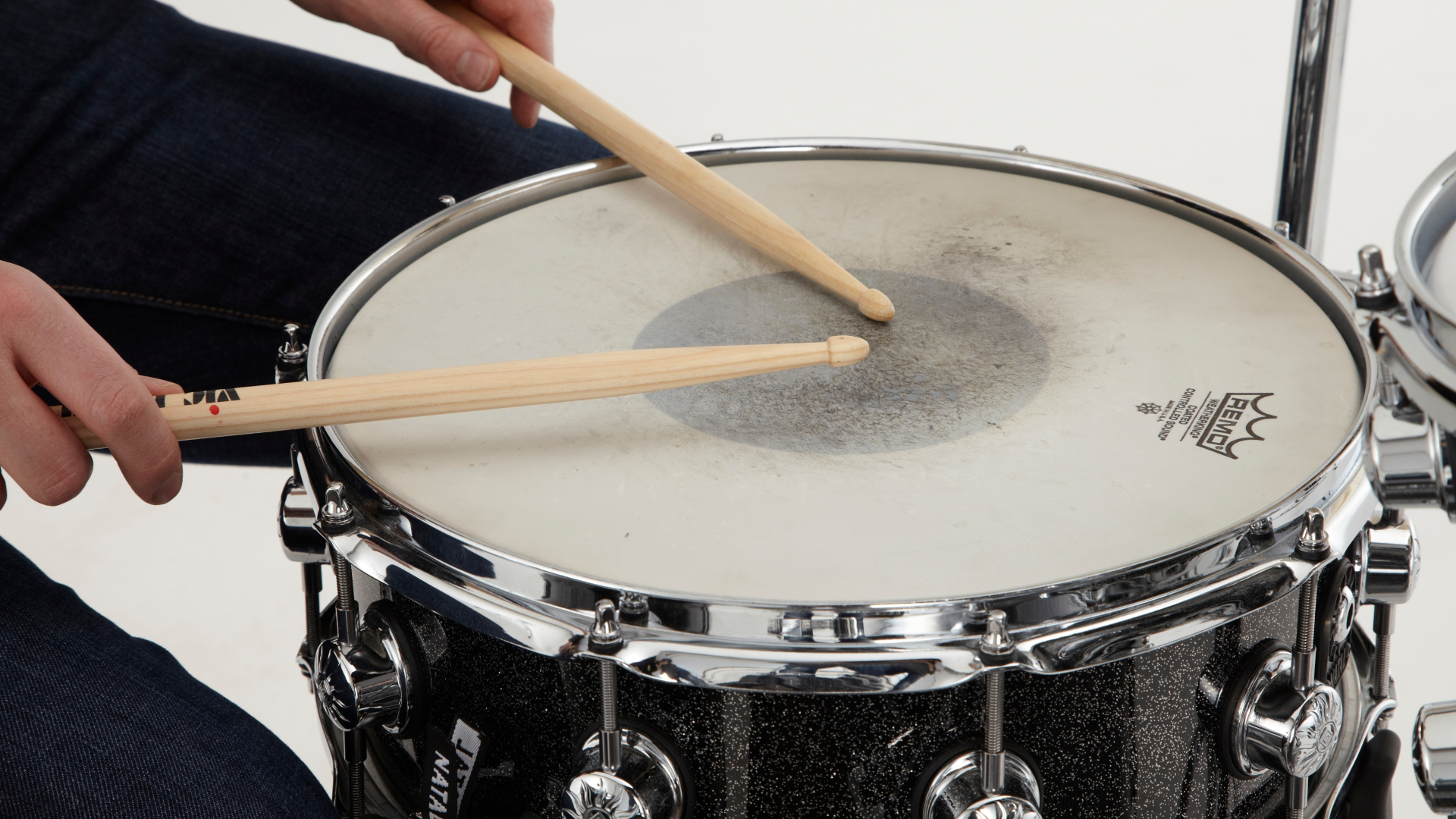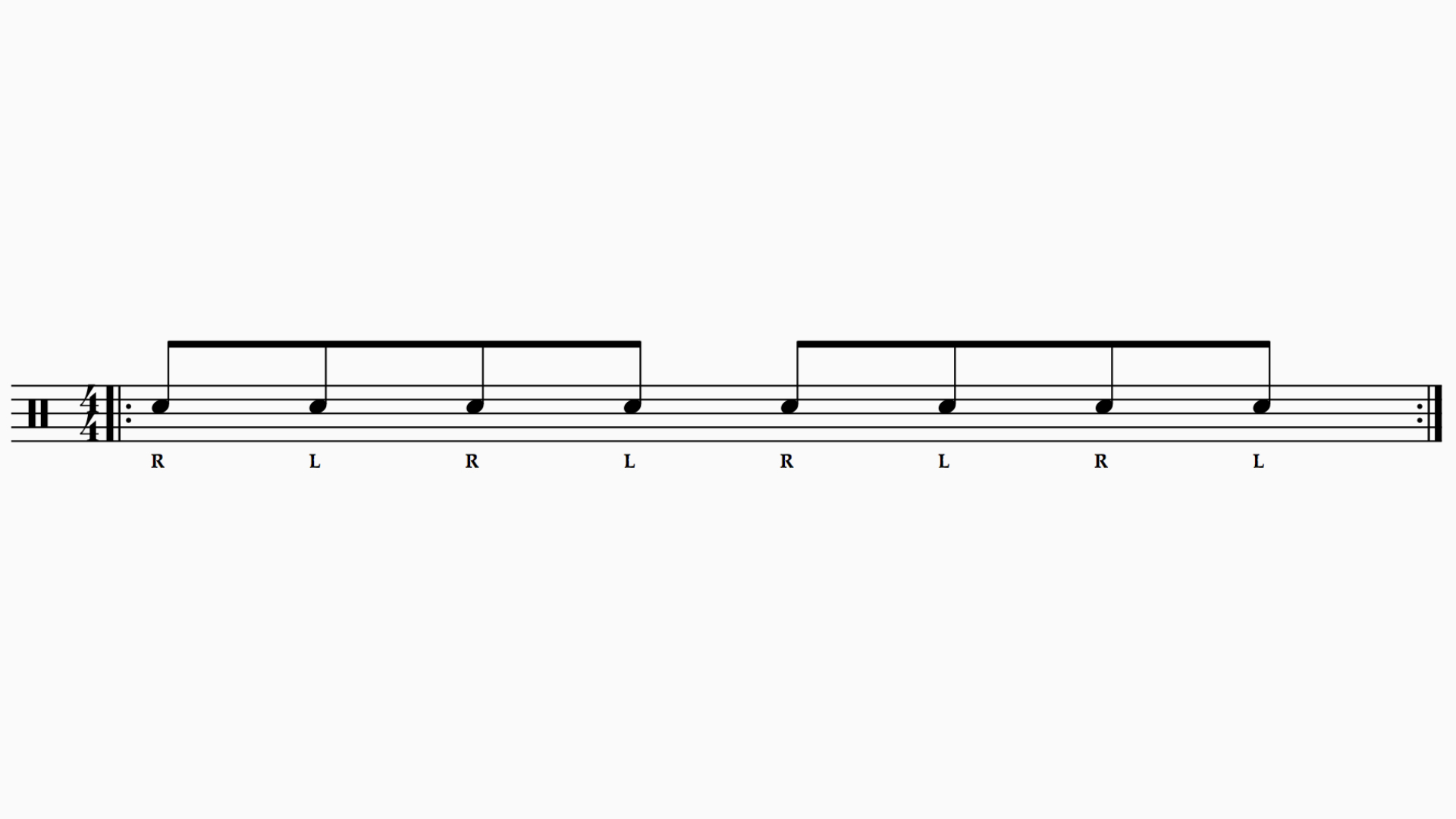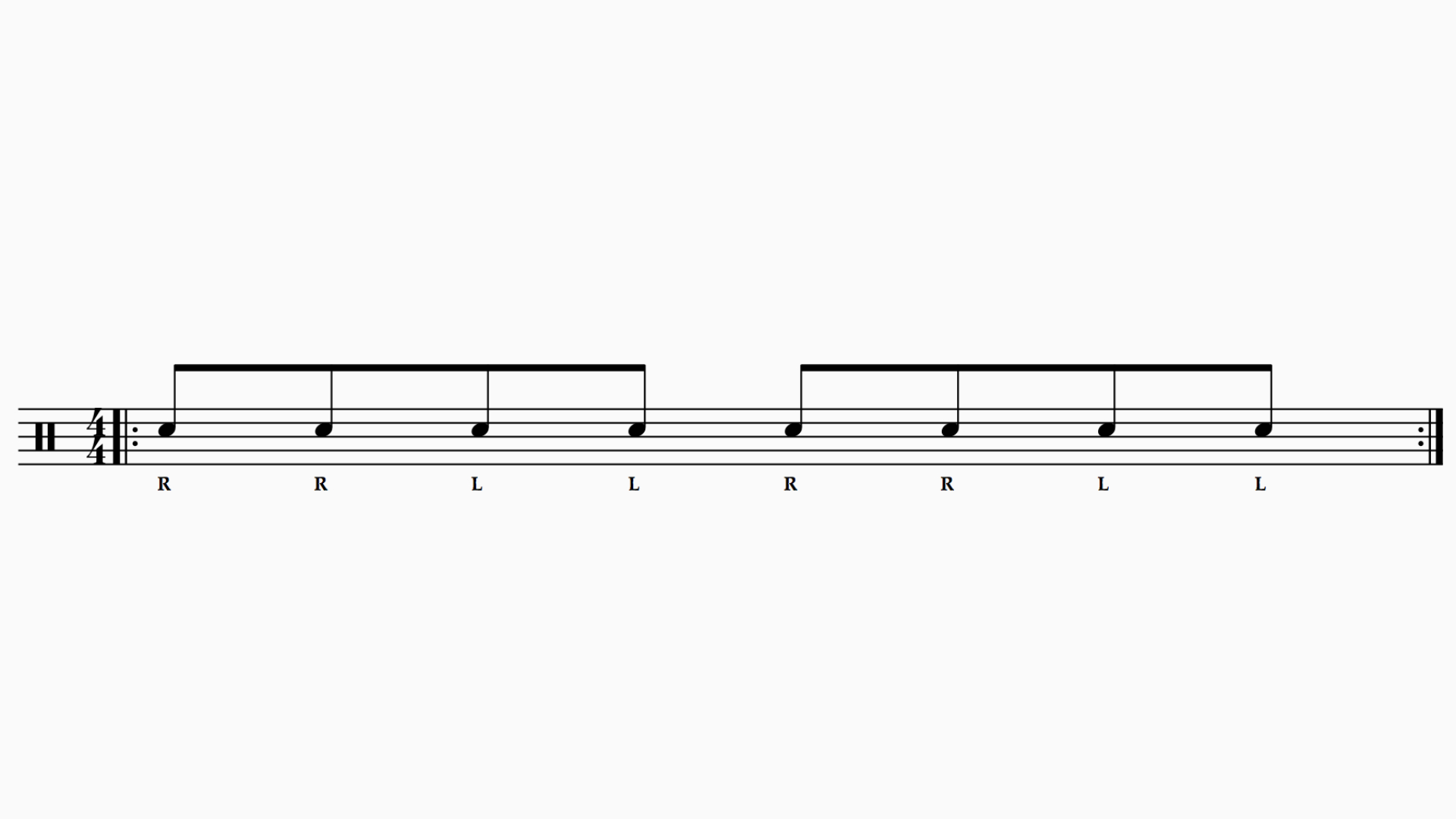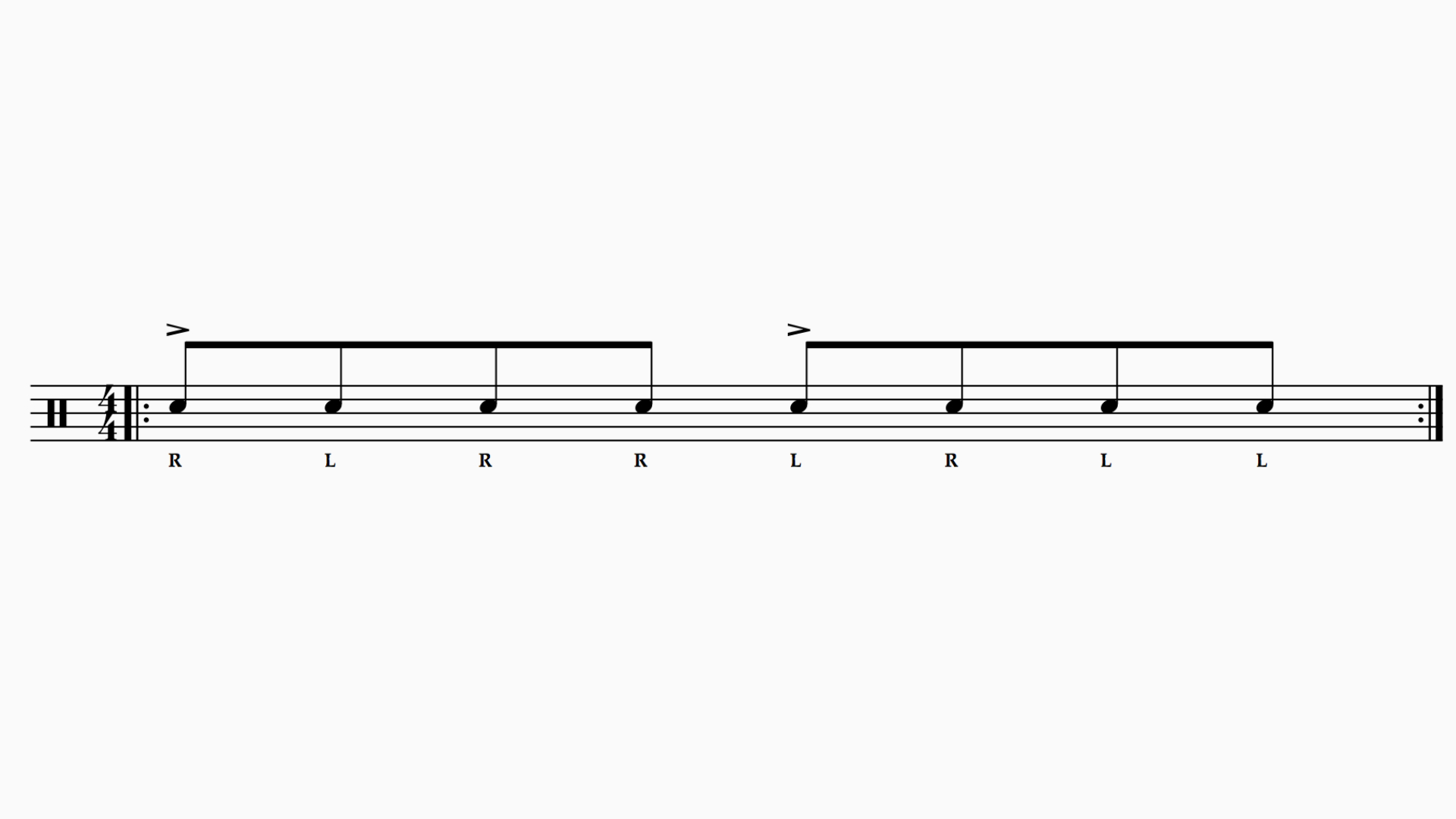Three easy drum rudiments every beginner needs to know
Start learning the building blocks of drumming with singles, doubles and paradiddles

Rudiments are the foundation of drumming: as well as helping to develop hand strength and drumstick control, learning rudiments will help to build your playing vocabulary, allowing you more freedom to move rhythms between drums in different ways without being restricted to single patterns.
There are 40 standard rudiments in total - mostly incorporating alternating patterns that are mirrored between both hands. While that might be daunting to start with, the good news is that a lot of rudiments are based on variations of single and double-strokes: that is, playing one or notes on each hand consecutively. If you’ve ever attempted to play a ‘drum roll’, congratulations! You’ve already got the basic concept of a rudiment down.
- The best snare drums for beginners and experts
- Practice in peace with one of the best electronic drum sets
- Get started with one of the best beginner electronic drum sets
Here, we’re looking at how to get to grips with three of the most common and useful drum rudiments. We've notated each of these as quavers, so you'll be playing two notes to every beat of the metronome. Each exercise creates the same rhythm, but the order your hands play the notes changes.
With all of the following exercises, it’s important to make sure that you’re playing each note evenly. This way you’ll develop control over the rudiments. we've recorded audio examples, playing through each exercise twice to match the repeat signs in the notation.
Set a metronome to a slow tempo (we chose 75bpm, but you could start slower) so that you can take care to control the volume and space between each note. Once you’ve got the exercise sounding smooth, gradually speed-up the tempo (a few beats-per-minute at a time). Try and be patient, speed will come easier with better control at slower tempos.
Single Stroke Roll

As we mentioned earlier, the single stroke roll is what most people have in mind when they think of a 'drum roll'. The pattern starts on your dominant hand - we’ve included sticking patterns (R,L,R,L) for right-handed players here. If you’re learning to play left-handed, reverse the sticking so that you’re starting on your left hand. We’ve notated the single stroke as semiquavers, so there will be four even notes played between each beat of the metronome. Listen to the audio example to hear how it should sound.
Double Stroke Roll

If the single stroke roll is played one note per-hand, then it follows that the double stroke roll is made up of two notes per-hand. It's sometimes called the 'mamma-dadda' due to the type of sound it produces. Once again, start with your dominant hand and play through the exercise in the same way as with the single stroke roll. As with before, you’re looking for notes that are evenly spaced, and played at the same volume.
Get the MusicRadar Newsletter
Want all the hottest music and gear news, reviews, deals, features and more, direct to your inbox? Sign up here.
Paradiddle

The paradiddle is another of the most common rudiments. It is a great pattern for developing hand strength as it features a mixture of single and double-strokes, and as with most rudiments, the pattern is symmetrical. This means that both of your hands are getting the same level of workout. The syllable give the paradiddle its name, as the rhythm sounds like 'pa-ra-did-dle, pa-ra-did-dle' when played.
We’ve included an accent (a louder note) to each downbeat here, indicated above the notes. It can be tricky (and frustrating!) jumping between singles and doubles at first, so be sure to take it slowly while you develop your muscle memory. The resulting number of notes is the same as the two previous exercises.
Try this!

Being able to switch between singles, doubles and paradiddles is a huge benefit to your playing. Once you are comfortable with each sticking pattern, try playing each one back to back. Start with a bar of single strokes, then double strokes, followed by paradiddles, then another bar of single strokes. Pay attention to the difference in sound between each pattern, then do your best to make the transition between the three rudiments as seamless as possible.

I'm a freelance member of the MusicRadar team, specialising in drum news, interviews and reviews. I formerly edited Rhythm and Total Guitar here in the UK and have been playing drums for more than 25 years (my arms are very tired). When I'm not working on the site, I can be found on my electronic kit at home, or gigging and depping in function bands and the odd original project.









